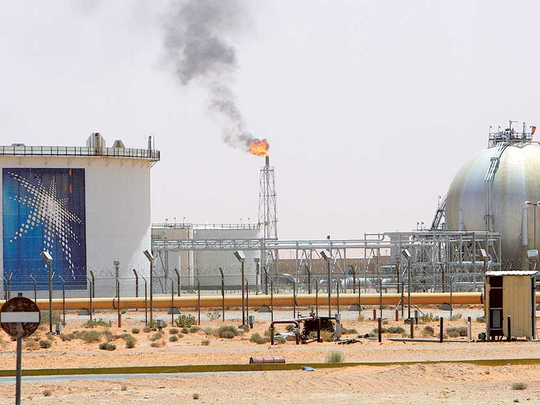
DUBAI/LONDON: Saudi Arabia has long said it could produce as much as 12 million barrels per day (bpd) of oil if needed, but that pump-at-will claim — which would require huge capital spending to access spare capacity — has never been tested.
Sources say the kingdom may have stretched its current limits by extracting a record of around 10.7 million bpd this year, which could be one reason why Riyadh pushed so hard for a global deal to cut production.
Riyadh, the world’s top oil exporter, felt the burn of cheap oil this year when crude was trading below $50 a barrel, as the reality of its costly war in Yemen and the task of shaking up its economy to create thousands of jobs began to sink in.
With tight resources, Saudi Arabia found itself weighing the prospect of investing billions of dollars to raise oil output further if it wanted to gain more market share under a strategy adopted in 2014.
Instead, cutting production amid a global glut and low prices to take the pressure off its oilfields, secure better reservoir management and save itself unnecessary expenses, seemed the perfect deal.
“You invest in raising your production when prices are high, not when they are low,” a Saudi-based industry source said.
“Choices are tougher now. The question is, would the Saudi government with its tight budget put huge investment in raising production or put it somewhere else where it’s needed more?” Oil rose as much as 6.5 per cent on Monday to an 18-month high after Opec and some of its rivals reached their first deal since 2001 to reduce output jointly. On Thursday, oil was trading above $54 a barrel.
Under the deal, Saudi Arabia, de facto leader of the Organisation of the Petroleum Exporting Countries, will from January cut output to around 10 million bpd — well below the 12 million bpd that the state has affirmed it can produce.
Saudi-based industry sources and market insiders say the kingdom cannot sustain historically high output for long. State oil giant Saudi Aramco has never tested 12 million bpd and would find it hard to keep the needed investments flowing with current low oil prices, they said.
Aramco, responding to a Reuters request for comment, said only that the company does not comment on current production levels.
One source familiar with Aramco production management said the firm’s capacity stood at 11.4 million bpd and it was still working to boost that figure to 12 million by 2018.
“Twelve million bpd has been planned since 2008-2010 and every annual budget worked towards that goal,” the source told Reuters on condition of anonymity.
To achieve that goal, the company has annual operating expenses (opex) of $20 billion and capital expenditure (capex) at around $40 billion, the source said. “When the 12 million bpd plan is achieved by 2018, the overall capex will fall to $20 billion,” he added.
Aramco does not disclose its open or capex figures.
SHIFT IN THINKING
In a note to clients in May, US consultancy PIRA estimated Saudi Arabia’s instantly available capacity at that time at 10.5 million bpd, after tracing expansion plans since 2008 and calculating an annual decline rate of 4 per cent.
“Saudi Arabia could produce more but it would likely come at the expense of optimal reservoir practices. They could certainly bring on new fields but this is a lengthy process (years) and expensive as well,” PIRA wrote.
“So far the kingdom is not adding any significant new producing capacity based on project announcements and rig activity but rather replacing the aforementioned 4 to 6 per cent annual decline rate.” Saudi oil officials have said they can produce up to 12 million or even 12.5 million bpd if needed, particularly in the event of a sudden, global supply disruption.
Some say it is not a question of whether Saudi Arabia can do it, it is a matter of how soon.
Former oil minister Ali Al Naimi had said that to reach 12 million, Saudi Aramco would need 90 days to move rigs from exploration work to drill new wells and raise production.
Saudi Arabia has been working for most of this year towards boosting prices, rather than leaving that job to market forces, a shift from the strategy it had championed since November 2014.
The pain of cheap oil was enough to bring other producers to the negotiating table, but industry sources said the kingdom was also keen to seal a deal as it plans to offload a stake in Aramco by 2018.
Riyadh’s finances have been under pressure. With a big budget deficit last year, the kingdom was forced to seek new sources of income, including taxes and other fees and to cut spending.
The government is trying to boost non-oil revenue and modernise the economy through an ambitious reform plan called “Vision 2030”, championed by Deputy Crown Prince Mohammad Bin Salman, of which the centrepiece is the Aramco stake sale.
But ironically, before cutting dependence on oil, the kingdom needs revenues from crude sales to conduct its reforms.












